Spoiler Warning: This article is a deep dive into an already-previewed Heavy Hitters card.
When you main a low-tier hero, your greatest fear is that you will be forgotten, left afloat without an oar, in desperate need of anything at all. With each wave of new cards, you search for something tailor-made for you - and hope it's not simply better for another hero.
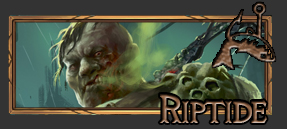
As a Riptide main, I feel lucky: we have not been forgotten. The expansion slot promised - among other things - to support a variety of heroes by printing cards outside the theming and class restrictions of the accompanying set. In the first instance of the expansion slot, we were given Intoxicating Shot, an intriguing (and confusing) specialization pushing us toward trap damage.
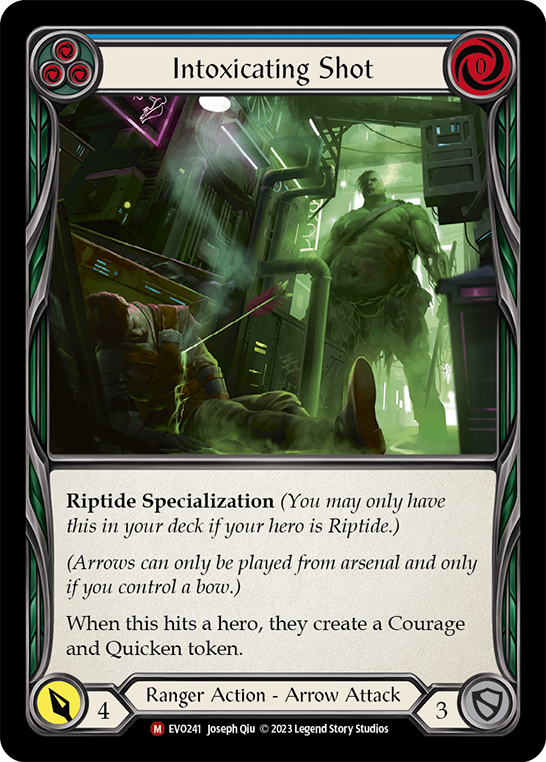
And as expansion slot spoilers for Heavy Hitters began to flow, we were once again gifted with a card that’s got Riptide written all over it: Reel In. (Jump over to the spoiler source by following the link.)

Is this card good? What is its place in a Riptide deck? And what does this say about LSS’s intended direction for Riptide?
Let’s start by breaking down the card and exploring the many ways it fits into the Riptide decks we see.
Pitch Value
Reel In is blue, giving us 3 resources. If you read my recent article on Fatigue Riptide, you know that blues enable a couple of play patterns there, including:
Pitching to a bow to float 2 resources ahead of a Codex of Frailty
Loading and firing a Battering Bolt with Dreadbore.
I already wanted to include a couple extra blues to make these play lines more consistent, so Reel In fits perfectly.
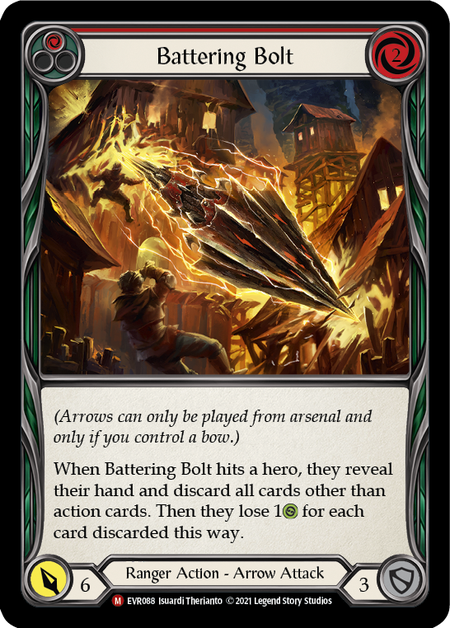

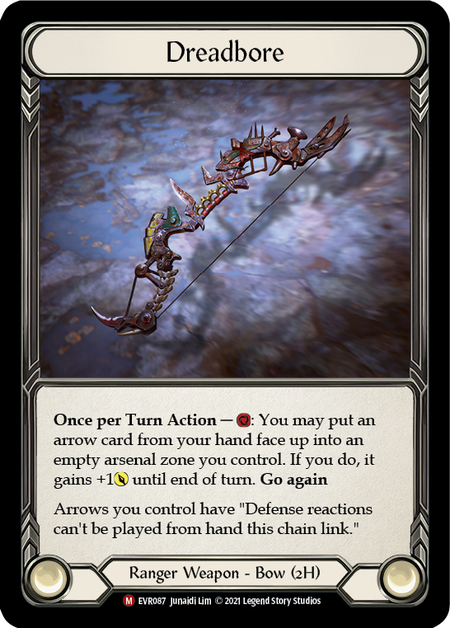
Lurking outside of Riptide’s meta decks, we can find another good use case: aim counters. Aim is relatively underwhelming right now; what we need is a good aim threat that feels solid against most decks. Unfortunately, the perfect candidate for such a role is locked behind a specialization for Azalea.
In the absence of a solid aim arrow, I am drawn to cards like Fletch a Red Arrow that give Riptide some much-needed evasion. Blue pitches work wonderfully in aim decks, as 3 resources is just enough to play Fletch... or Dead Eye, load an arrow from Riptide’s ability, flip with Barbed Castaway for an aim counter, and fire off a 1-cost arrow.
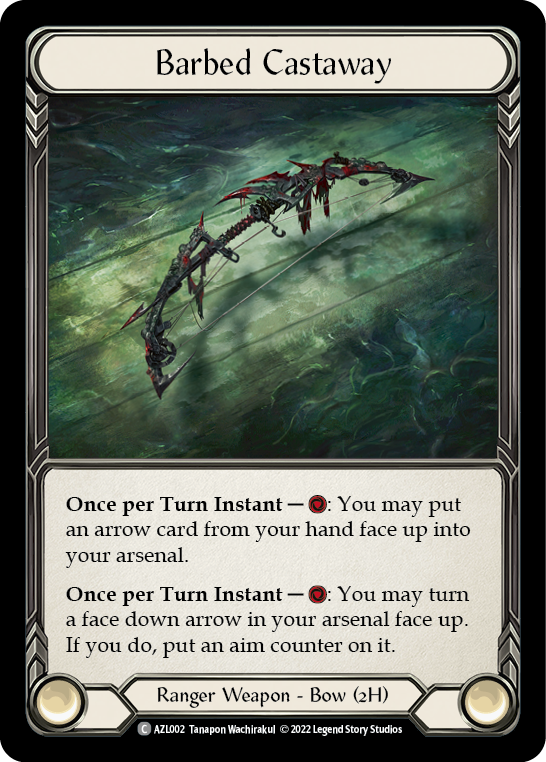
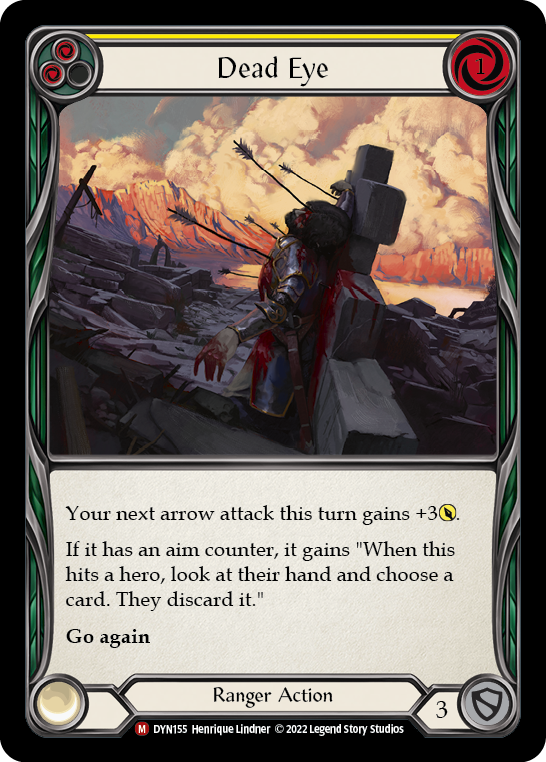
The only deck that doesn’t need blues is the aggro variant: cheap arrows, pumps, and lots of reds to keep Ravenous Rabble swinging for max. Because this deck doesn’t need a lot of blues, Reel In probably doesn’t have much of a place here. That becomes apparent once we look at the...
Cost
Herein lies the flexibility. Reel In costs whatever you want it to! Want to dig deep for a hand full of traps? Ditch a couple blues or your whole hand. Want to throw a Hail Mary for the perfect trap? Cast Reel In for 0. This will never be a fully dead card because you can tweak it to best suit your current circumstances.
Card Type
Reel In is an instant. This is both a pro and a con. On one hand, this allows us to load a card with Riptide when we play it from hand. This can help us get around dominate by loading a d-react before it even resolves. It also helps us to load in the Crucible of War traps that can only be played from arsenal. If you have one in hand, you can both load and block with it before Reel In resolves and gives you another chance to find more defensive options.
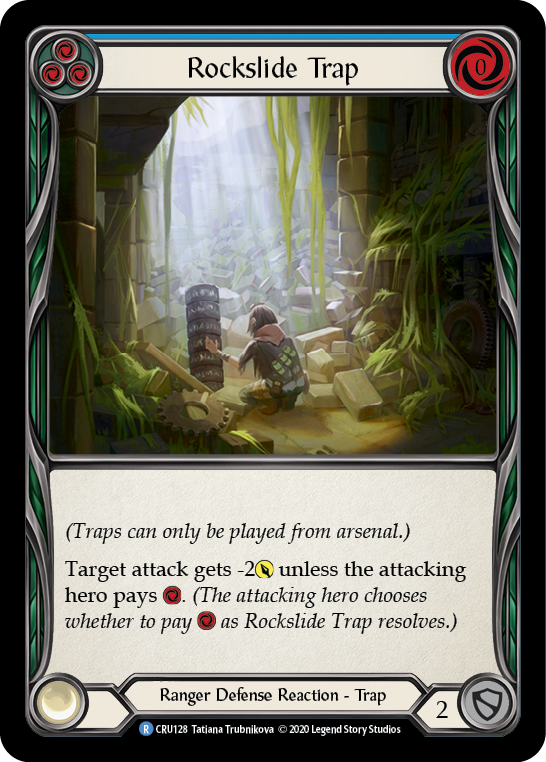
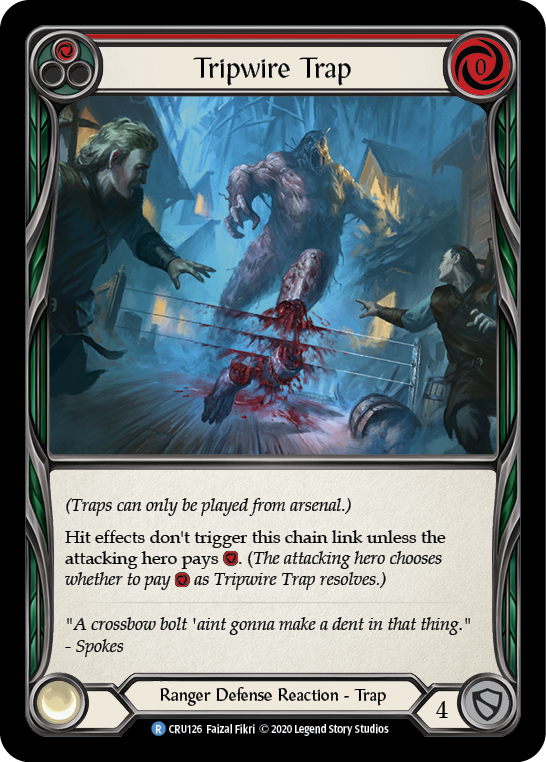
On the other hand, it does not block on its own. No matter what the text is on a card, instants will always be a liability, rarely blocking a crucial on-hit effect with the same consistency as a good ol’ block 3.
Card Effects
That leads us to the meat and bones of the card. What does a blue X-cost card do? Reel In allows you to reveal the top X+1 cards from your deck and draw up to 4 traps from them. It becomes immediately clear that a single blue is all that’s needed for maximum value: revealing 4 cards and drawing them all if they are all traps.
Many will be drawn to the best case scenario here:
The game is neck and neck. Both of you are sitting at 4 life. Your opponent buffs their go-again attack coming in for lethal. But wait, what’s this?? You pitch a blue, draw 4 traps - all of which are triggered - and kill them with that unblockable trap damage!
This dream scenario will happen, but it’s not realistic to plan for that regularly. Opponents will begin to avoid go again or buffing attacks as they get low on life, making traps harder to trigger. Additionally, you will likely need to play some of your traps to make to the late stage in the first place. If you don’t perfectly pitch stack or keep track of traps played, you could easily whiff when you need the kill.
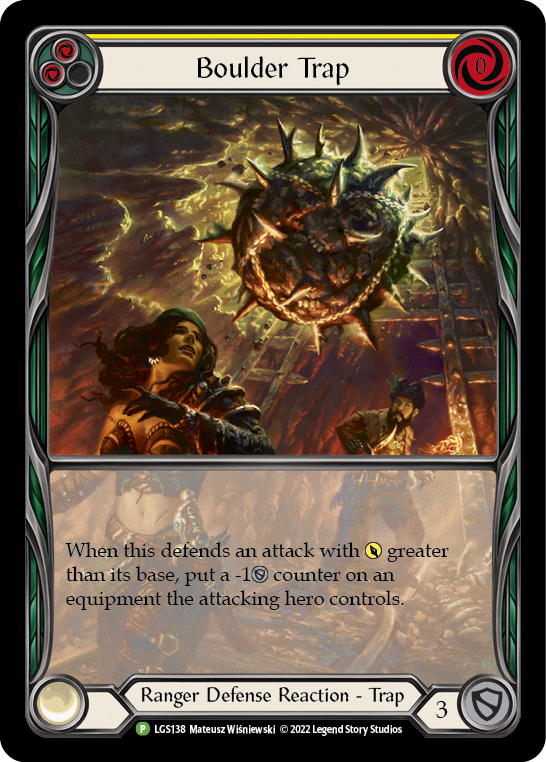
I think it’s better to view this not as the final piece to some trap combo, but as a way to improve consistency. Riptide is a flexible deck. Even the most aggressive lists run highly disruptive defense reactions. Reel In allows you to either keep a more aggressive hand to swing back hard on the next turn, or pitch that hand away for later to draw what you need to handle a particularly powerful turn from the opponent.
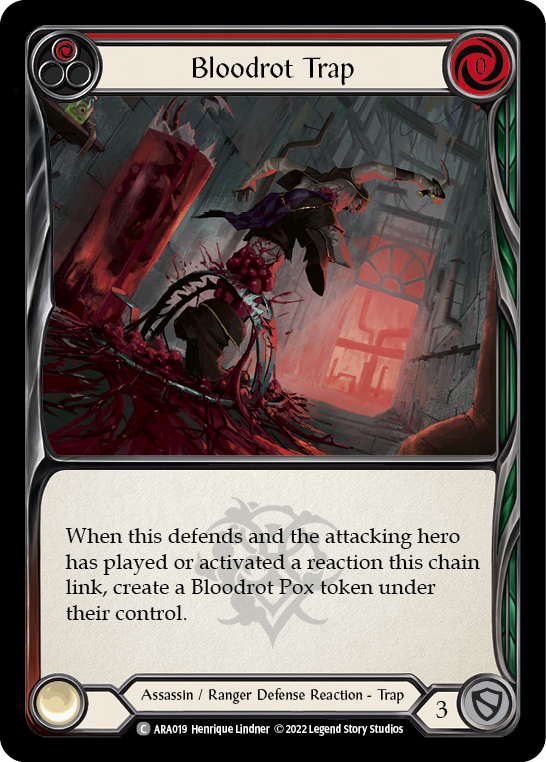
In a fatigue list, this can help you save much-needed attacks. Instead of using them to block, you can pitch them all to find traps and block more efficiently. When you are running just about every trap you can, your chances look pretty good.
There's still some text we have left to discuss, and it’s the part that excites me most as a Riptide player…
Reload
Any time I see the word reload, I Immedietely think of the CRU traps: Tripwire Trap, Pitfall Trap, and Rockslide Trap.
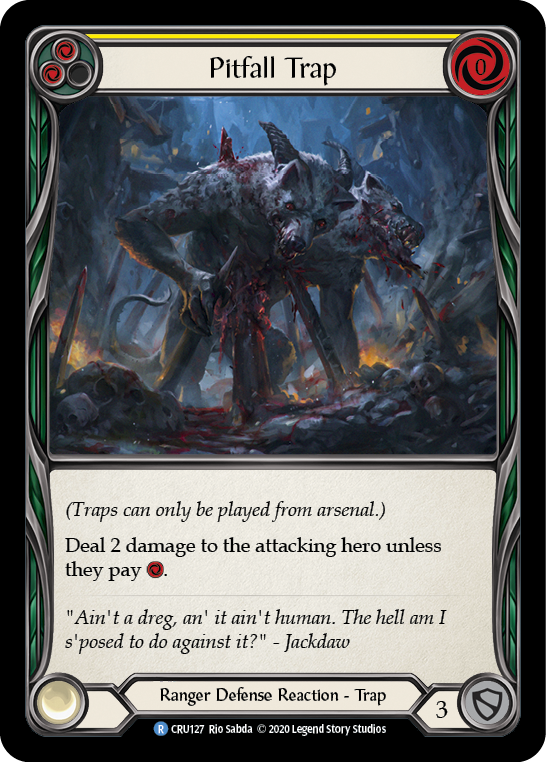
These cards will forever be the weirdos of the trap family, a vestigial organ that I am more than happy to have. Upon the release of Riptide, these were errata'd to always trigger, regardless of whether or not the opponent pays the resources to avoid the effect. This means these traps will always ping for 1 damage. Because of this, Pitfall Trap has been a popular choice for every style of Riptide deck as a way to close out games with a well-timed 3 damage. Tripwire and Rockslide also see some play depending on the deck, but the need to arsenal them has kept their numbers at bay. I’ve found the current sweet spot to be 4 in a deck, but I always want to play more.
Reload lets me play more.
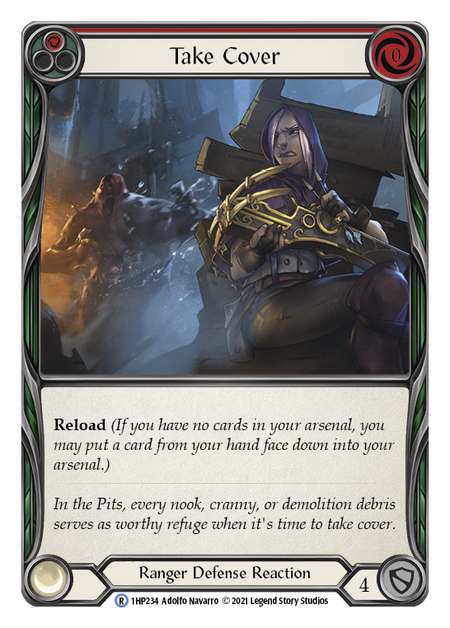
In my fatigue writeup, I mentioned how I incorporated Take Cover as a way to add consistency to the deck, allowing me to load two CRU traps off a single card. Reel In not only gets CRU traps into arsenal with reload - it also helps us dig for those traps in the first place.
I can’t wait for playlines like the following:
Pitch a blue to play Reel In.
Before Reel In resolves, load a CRU trap with Riptide and block with it.
Reel In resolves, drawing 2 CRU traps and another trap.
Reload a CRU trap and block.
Play the other trap, loading the final CRU trap with Riptide.
Block with the final CRU trap.
While this turn is an ideal, you can see how this helps to smooth out play lines. Have a CRU trap in hand? Reel In helps you play it. Draw a CRU trap? Reel In helps you reload. Draw multiple CRU traps? Reel In helps you find other traps, which help you load. Even casting Reel In for 0 can load 2 CRU traps from hand while having the possibility of drawing a card.
Is this enough to run 9 CRU traps? I doubt it. Rockslide Trap is still an underwhelming card, and there's the possibility you draw them all at once and you have a dead hand. I do think Reel In bumps up the number though. 6-7 is likely the sweet spot for a fatigue-style deck.
As much as I love reload, there is one nuance that will reduce its effectiveness in some decks: you can only reload if you have no cards in arsenal. Aim decks LOVE New Horizon, and many aggro Riptide lists run the legendary hood as well to set up big 6-card hands. A lot of the flexibility reload gives you disappears if you’re sitting on a face-up aim arrow in arsenal.
Synergies
Now that we’ve looked at what the card does, are there any synergies that stand out? There are a few, but not many. The most likely is Fate Foreseen. Most opt effects will be irrelevant, as we’d just draw into the card that we opted. Fate Foreseen allows us to sneak out a quick opt before we go Reeling, increasing our chances of an impactful hit.
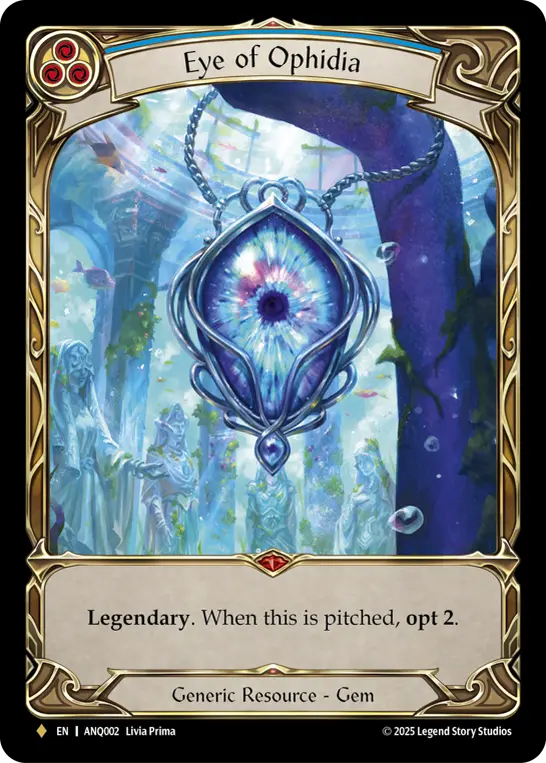
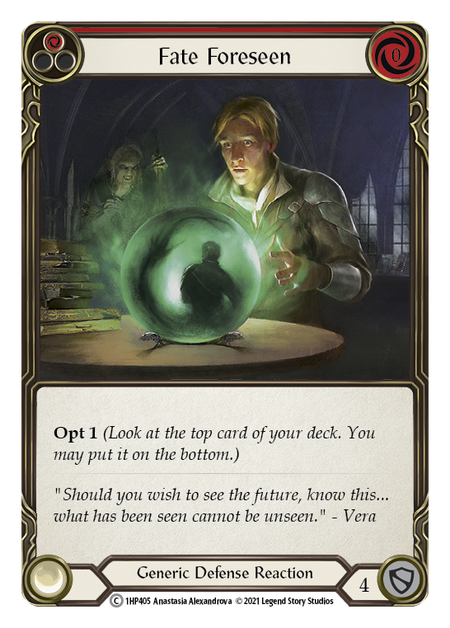
In this same vein, Eye of Ophidia is tantalizing. Pitching an Eye to opt 2 ahead of revealing 4 seems really good. Unfortunately, I don’t think it’s good enough to warrant including a card that does basically nothing on its own. I already struggle to include Plague Hive in my lists; fables are risky in a deck without a weapon to reliably pitch them to.
Reeling with Other Rangers
Look, I’m a Riptide main in through and through. I have only ever played Riptide at competitive constructed events (save for one armory where I borrowed a Dromai deck *shudder*). With that being said, this is open to all Rangers. Will Azalea want to dig deep for a couple of high-impact traps? I doubt it, but in the right meta it’s a possibility. While this isn’t technically a Riptide specialization, I would be very surprised if we saw this card in an Azalea list anytime soon.
Final Thoughts
So what’s the verdict? I think Reel In falls into the same camp as Intoxicating Shot. This is not going to break Riptide into the meta anytime soon, but if you’re playing more blues, you will probably want to run this card. I think it will work best in fatigue and aim lists, though I don’t think this makes current Riptide Aim viable.
Reel In has its risks. You can whiff and draw 0. It can be a 0 block in a hand that needs something. It can get stuck in a hand with a bunch of reds.
I doubt Reel In will start as a 3-of in most decks. More likely, this will be a 1- or 2-of to help you dig deep to block out an opponent’s power turn.
Still, there is some small part of me that thinks I might be wrong. Maybe in 6 months' time, we’ll all be complaining about Riptide’s dominance and how hard it is to play into a deck that can always dig deep for the perfect defensive cards. The only way to know for sure is to start testing!




